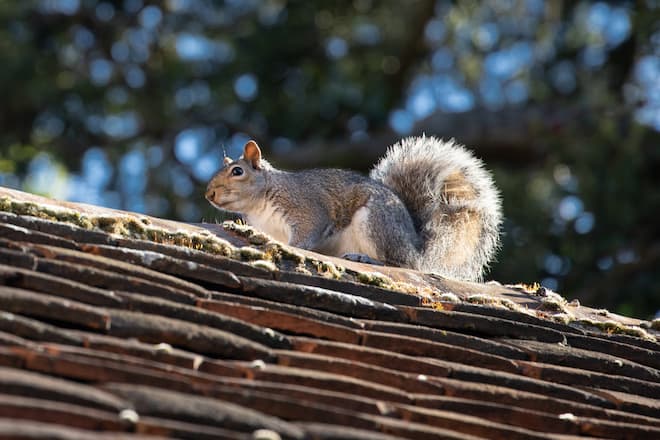The charismatic and adaptable Eastern Grey Squirrel (Sciurus carolinensis) is conspicuous in the urban and suburban landscapes of North America. While their endearing antics and bushy tails are well-known to many, a deeper look reveals a world of fascinating details that make these creatures far more intriguing than they initially appear. Here are five fascinating facts about the Eastern Grey Squirrel that illuminate its unique behaviours, habitats, and environmental impact.
Urban Adaptation and Evolution
The Eastern Grey Squirrel’s remarkable adaptability is demonstrated by its ability to flourish in urban environments. Originating in forests, these squirrels have adapted to thrive in urban habitats, which offer ample food sources and nesting opportunities. Their fur ranges in colour from grey to black, with some even exhibiting melanistic traits. This adaptability has resulted in their ubiquitous presence in North American cities.
Nesting Expertise
Eastern Grey Squirrels are adept at constructing their own comfortable habitats. They build ornate nests, or dreys, high in trees out of leaves, twigs, and other natural materials. These dreys provide secure havens for nesting and evading predators. Observing these intricate structures nested among the branches demonstrates the ingenuity and tenacity of the squirrels.
Patterns of seasonal reproduction
To ensure their survival, these resourceful organisms have evolved unique reproductive strategies. Each year, Eastern Grey Squirrels have two breeding seasons, one in the spring and one in the autumn. This scheduling corresponds to the availability of food sources and favourable weather conditions. Female squirrels meticulously select safe and sheltered nesting sites, frequently utilizing tree cavities or abandoned bird nests.
Ecological Function as Seed Distributors
In addition to their entertaining activities, Eastern Grey Squirrels play a crucial role in the dynamics of the ecosystem. As ardent foragers and collectors, they contribute to seed dispersal and, inadvertently, forest regeneration. Squirrels bury nuts and seeds in diverse locations, of which some will inevitably be neglected. These neglected caches can sprout into new plants, thereby influencing the composition and diversity of forests.
Interspecies Communications
The interactions of the Eastern Grey Squirrel with other species emphasize its influence on its ecosystem. While they primarily feed on nuts, seeds, and fruits, their diet can also include nestlings and avian eggs. This behaviour has resulted in complex relationships with avian species, especially when their habitats overlap. The presence of squirrels can have repercussions on avian populations and nesting success, illustrating the interdependence of species within ecosystems.
In conclusion, the Eastern Grey Squirrel is not merely an endearing backyard visitor. Its adaptability to urban environments, nesting skills, seasonal breeding patterns, ecological function as seed dispersers, and complex interactions with other species all contribute to its unique position in the natural world. As we observe these nimble creatures navigating our environment, it is important to recognize the myriad roles they perform and the ecological insights they provide.
Contact us for more information about our Humane squirrel removal services in Oshawa.
